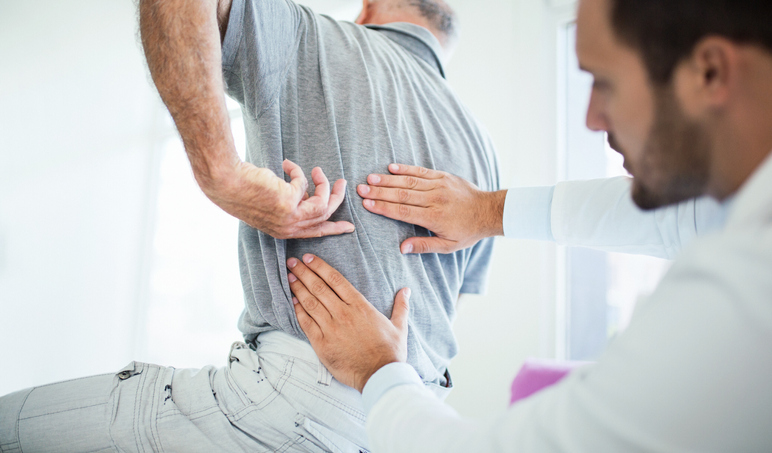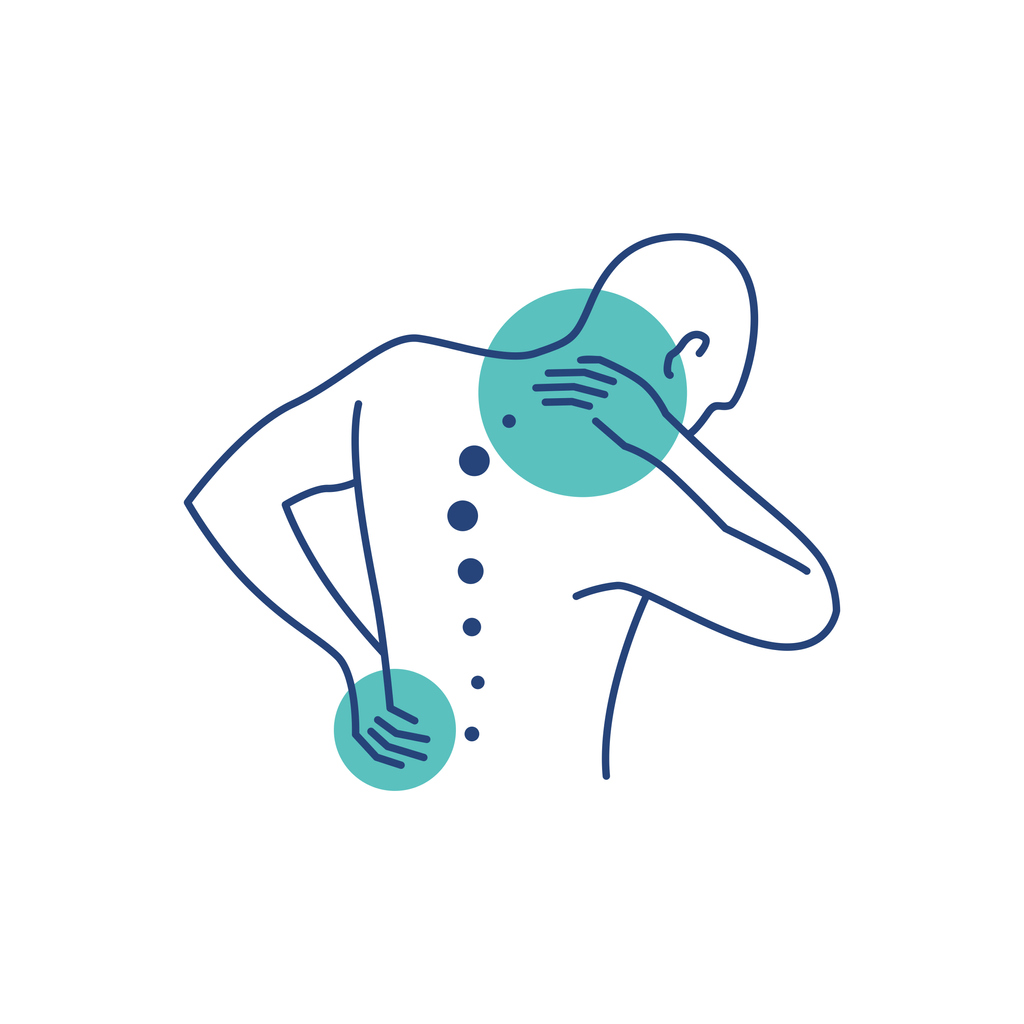Pain
Causes of Lower Back Pain

The lower back, or lumbar spine, is composed of bones, joints, ligaments, nerves and muscles that work together to support the weight of the upper body. The lower back region provides support for the spinal column and allows the body to bend, twist, and rotate the hips. Nerves in the lower back also connect to the pelvis, legs and feet.
Unfortunately, the lower back is susceptible to pain and injury. An estimated 80% of Americans will experience lower back pain at some point in their lives. It is the most common cause of job-related disability claims and one of the most common reasons for doctor visits.
Causes
Chronic lower back pain typically involves a joint problem, irritated nerve, or disc issue. Causes of lower back pain include, but are not limited to, the following:
- Trauma
Acute injuries due to motor vehicle accidents, falls, or other incidents can lead to pain in the lower back. Lower back pain that develops after trauma should be medically evaluated. - Muscle or ligament injury
The majority of lower back pain is the result of a muscle or ligament sprain or strain. Certain activities, such as lifting heavy objects, twisting the spine while lifting, poor posture, sports injuries, or falls, can stretch or tear the muscles or ligaments. This can occur suddenly or develop over time due to repetitive activity. - Lumbar herniated disc
Pain from a herniated (slipped or ruptured) disc develops when the jelly-like center breaks through the outer layer of the disc and places pressure on the nerve roots or spinal cord. The disc wall is full of nerve fibers that become irritated and inflamed when compressed. - Degenerative disc disease
Discs lose hydration and experience wear and tear during the aging process. Disc walls can develop tears and cause pain. Discs can also collapse, which can lead to narrowing of the spinal canal (spinal stenosis). - Spinal stenosis
Spinal stenosis involves the narrowing of the spinal canal, which places pressure on the spinal cord and spinal nerves. This can cause pain, numbness, cramping and weakness, which typically worsen when standing or walking. - Sciatica
The sciatic nerve connects the spine to the legs. Sciatica occurs when a disc places pressure on this sciatic nerve, resulting in pain in the legs and feet. - Facet joint dysfunction
Two facet joints are located behind each disc in the lumbar spine. The cartilage inside a facet joint can become inflamed and painful. - Sacroiliac joint dysfunction
The sacrum at the bottom of the spine connects to each side of the pelvis by the sacroiliac joints. These joints absorb shock and tension between the upper and lower body. Too little or too much motion of one or both joints can cause pain due to inflammation (sacroiliitis). - Abnormal spine curvature
Spinal curvature can be caused by scoliosis, kyphosis or lordosis, which are typically diagnosed during childhood or adolescence. This curvature places pressure on the muscles, tendons, ligaments or vertebrae, causing pain. It can also cause the discs, facet joints or sacroiliac joints to breakdown, causing lower back pain. - Spondylolisthesis
Spondylolisthesis is a medical condition that occurs when a vertebra slips over an adjacent vertebra. Although painful, it is treatable in most cases. - Osteoarthritis
Osteoarthritis occurs due to wear and tear of the facet joints and spinal discs. Spinal osteoarthritis is associated with the aging process. It can occur at a specific level or multiple levels of the lower spine and results in pain, inflammation, instability, and oftentimes, spinal stenosis. - Spondylitis
Spondylitis is inflammation of the joints between the spinal bones, which causes pain in the lower back. - Spondylosis
Spondylosis is a degenerative disorder that causes loss of normal spinal function, resulting in pain. - Compression fracture
A compression fracture can occur in the cylindrical vertebra, causing sudden pain. This most often occurs due to weakened bones due to the aging process. - Other causes
Lower back pain can result from other conditions, including, but not limited to, the following: cancer of the spinal cord, arthritis, spine infections, kidney infections, fibromyalgia, pregnancy, endometriosis, ovarian cysts or uterine fibroids.


















